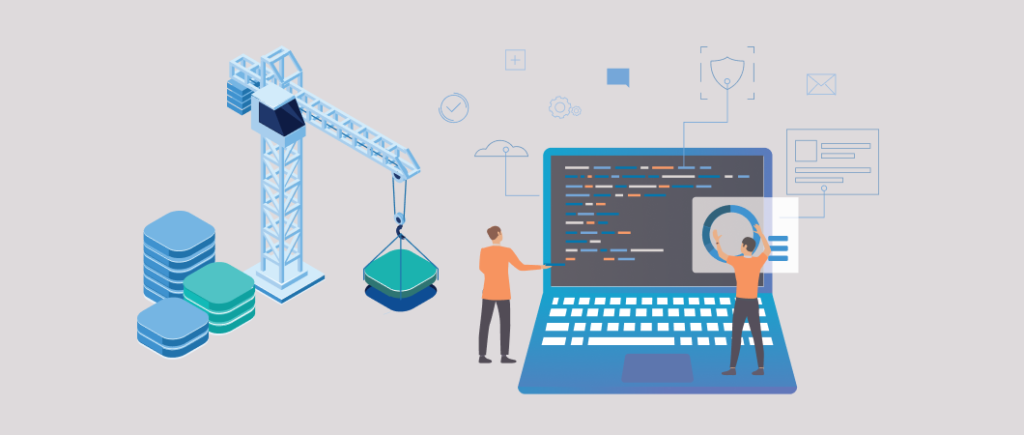Last updated on January 27th, 2021
As the demand for robust, high-quality software increases and software becomes the key enabler of business and profitability, software development must become faster and more agile. Software product development, quite clearly, has undergone quite the shift from the waterfall days.
Technological progress has also influenced the software development model considerably. Global market forces put pressure on businesses to constantly reinvent business models, update and upgrade software products, features, and functionalities to meet the continuously evolving business demands. If software development had become agile, the time for it to become agiler has arrived.
Perhaps it is now time to look at another shakeup in the product development model, one that leans more towards the ‘as-a-service’ concept. In the case of product development, let’s call this shakeup ‘Build-as-a-Service’.
The shift from product developers to product builders
The need to launch robust, highly secure products and exceptionally well-designed products has become the key ingredients for product success. Product development companies quite naturally have to look at what they need to do more to enable such products. For software development organizations this means understanding that the highly compartmentalized development process has to now become more seamless, integrated, and collaborative.
This need becomes especially more relevant as we move deeper into the age of Agile and DevOps. We now find an increasing overlap of roles. For example, we have developers testing and testers developing. The increasing fluidity of how the product moves from one role to another in this age of Agile and DevOps and the incremental rise of conversations regarding AI and no-code and low-code development is compelling. Is it not time to call everyone involved in the software development process product builders?
By moving towards a ‘Build-as-a-Service model’ we can give product development the holistic agility it needs by making the process more seamless, cohesive, and collaborative. Good software development is not just about developing features but about building a robust product that delivers a tangible business impact by remaining contextual and relevant even when times keep evolving.
Translate ideas into reality
Building products requires a keen sense of understanding ideas, even if they are single-line product ideas, to be able to convert them into technologically feasible products. This involves developing a deep understanding of the customer problems the product aims to solve, conducting a competitive and market analysis, and designing a product roadmap that bakes in evolution.
Adopting a collaborative and consultative approach to product development has become more important today especially in the face of constant technological evolution. Hence, development outfits have to become more focused on ‘building’ the product like a service so that it not only solves the original purpose but can evolve organically – from an MVP to a fully functional product and then move along its updates journey.
Product development is clearly, no longer just about development and testing. There is a pressing need to give the right suggestions on product strategy as well.
Process drives development
The Build-as-a-Service model lends itself well to this new age of product development where updates and updates have to be released “yesterday”. Organizations want to add new features to stay in the eye line of customers and increase competitiveness by addressing the emerging market opportunity.
However, to achieve this development organizations have to focus on building products without any compromises. Cutting corners or compromising architecture to increase the pace of development never yield good results. Soon enough, you will find yourself swimming in oceans of technical debt and get tangled in reels of spaghetti code and complicated logic…all of which WILL impact the product evolution.
Having the right processes in place that account for not only robust development but also keep technical debt in check become key. Measuring debt proactively, employing the right product design, making the right technology choices and allocating responsibilities, and measuring progress constantly becomes a key component of the “Build-as-a-Service” model.
Collaboration and communication
Product development has to now move from a disjointed effort to one that is more cohesive and collaborative. Given the shortage of talent, product development also has to be driven by where the talent is. This is especially important as technology dependency increases and the focus on software quality assumes paramount importance. Enterprise products are getting more consumerized, and elements like end-point security, mobility, performance, and UI and UX have become important contributors to software success.
Product development has to embrace clear communication and collaboration to drive better outcomes. Nearshoring, for example, can be leveraged as a catalyst for communication and collaboration between offshore and client teams and can become the glue that binds shared understanding. These can be the template to develop cutting-edge technology solutions even for business-critical and high-value projects – not just of low-value software development.
The Build-as-a-Service model adopts a more tightly integrated approach to software development and takes into account the shifting forces at play. By integrating people, processes, and technology, this model has often helped our clients progress in their technology journey to build products that support their business goals and ensure long-term success.



